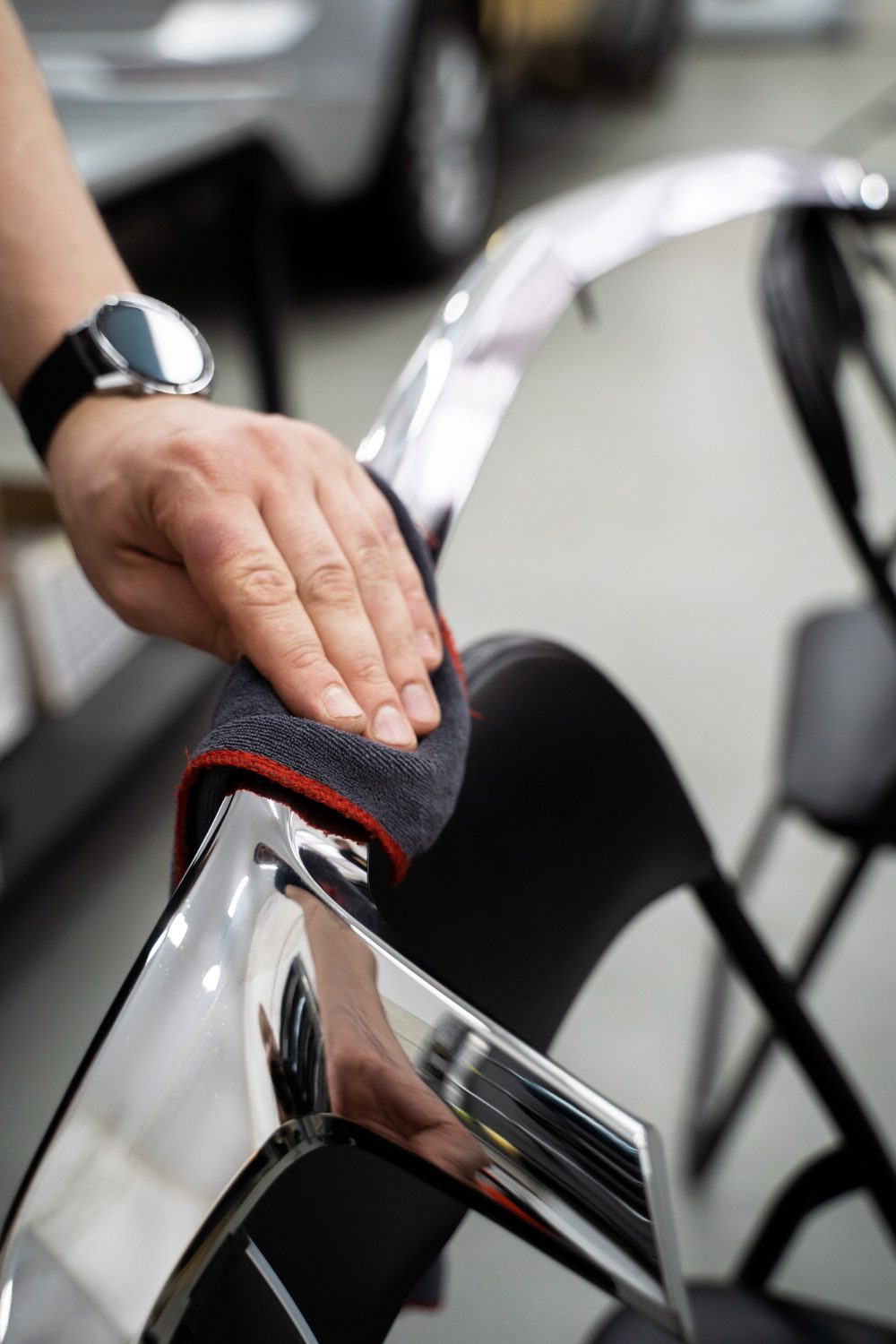Car care today is not just about maintenance—it’s a reflection of pride, passion, and attention to detail. For many drivers, a clean and glossy vehicle represents far more than a means of transportation; it’s a statement of self-care and craftsmanship. One of the most effective ways to preserve that shine and maintain your car’s value is by investing in a professional-grade car polisher for your own garage. This single tool can turn routine car maintenance into a rewarding experience that enhances both appearance and performance. According to Dr. Andrew Mitchell, an automotive technology lecturer at the University of Birmingham, “consistent polishing not only maintains visual appeal but also strengthens surface durability over years of use.”
The hidden value of a well-polished car
Polishing your car is about much more than aesthetics. A properly polished surface helps protect the vehicle’s paint layer from oxidation, minor scratches, and environmental damage. Regular polishing can extend the lifespan of your car’s paintwork, shielding it from UV rays, road salt, and dirt particles that can eat away at the finish over time. In addition, a well-maintained exterior significantly improves resale value—potential buyers notice the difference immediately. Investing in a polisher is therefore not just about shine; it’s about protecting an asset that represents thousands of euros in long-term value. Research by the European Car Care Association shows that cars with consistently polished finishes retain up to 15% higher market value than those without regular detailing.
Why owning a polisher at home makes sense
Having your own polisher at home brings convenience, cost savings, and control. A one-time investment in quality equipment often pays for itself after just a few uses, considering that professional detailing services can cost a significant amount each time. Beyond saving money, owning your equipment allows you to care for your car whenever it suits you—without scheduling appointments or waiting in line at a service center. It also gives you control over the products, pressure, and techniques you use, ensuring that every part of the vehicle gets the attention it deserves. For those who enjoy taking care of their vehicles personally, a polisher becomes more than a tool—it becomes a gateway to mastering your car’s look and feel. “When you understand your car’s surface and how to work with it, you develop a real sense of ownership,” notes John Keller, a U.S. detailing specialist with over 20 years of experience.
Understanding different types of car polishers
Before purchasing a polisher, it’s essential to understand the different types available and how they suit various skill levels. Rotary polishers are designed for experienced users and deliver powerful results but require precision and care to avoid damaging the paint. Dual action (DA) or random orbital polishers are more forgiving and ideal for beginners. They move in both circular and orbital motions, minimizing heat buildup and reducing the risk of swirl marks. Mini polishers, on the other hand, are perfect for smaller or hard-to-reach areas like bumpers, mirrors, or door handles. Selecting the right type of polisher is crucial—each serves a different purpose and caters to a specific level of expertise. According to Automotive Engineering Review (2024), DA polishers account for nearly 65% of the consumer market due to their safety and ease of use.
Practical steps to polish your car correctly
Achieving a flawless result begins with preparation and proper technique. Here are essential steps recommended by detailing experts:
- Wash and dry the car thoroughly to remove dirt and sand that could cause scratches during polishing.
- Choose the right compound based on your paint condition—mild abrasive for older surfaces, light finishing polish for maintenance.
- Work in small sections to ensure even results and prevent over-heating the paint surface.
- Move the polisher slowly in overlapping passes and avoid pressing too hard, as excessive pressure can cause damage.
- Finish with wax or sealant to protect the polished surface and enhance gloss.
As Professor Elisa Romero from the European Institute of Automotive Science notes, “the success of any polishing process depends 70% on preparation and patience, not just on the machine.” These steps help beginners achieve professional-grade results without risk of damage.
Common mistakes to avoid when polishing
Even with the best tools, mistakes can happen. One of the most frequent errors is applying too much pressure. Let the polisher and the product do the work—pressing harder will not speed up the process, but it might burn the clear coat. Another common issue is using the wrong type of polish. Some compounds are too aggressive for specific paints and can leave marks instead of shine. Always follow the manufacturer’s recommendations. Finally, neglecting surface preparation is a big mistake. If dirt remains on the surface, the particles can become trapped between the pad and the paint, resulting in additional scratches. Patience and precision are the true secrets to a perfect polish. A recent study by AutoTech Europe found that 68% of paint defects reported after amateur polishing stemmed from poor surface cleaning and product misuse.
Beyond cars: other creative uses for a polisher
While car polishing is the most common use, a professional polisher has a variety of other practical applications. You can use it to restore motorcycle parts, revive dull metal surfaces, or even refresh furniture with a glossy finish. This versatility means that your investment continues to bring value beyond your vehicle. Whether you’re polishing chrome handlebars or smoothing out stainless-steel details, the results can be equally impressive. A good polisher is a multi-purpose tool that keeps on giving, making it one of the most worthwhile additions to any workshop or garage. “We see more customers applying automotive polishers to marine and household uses, which expands their value significantly,” confirms Mike Peterson, a tool engineer from the American Garage Innovation Center.
Building a car care habit that lasts
Polishing should not be seen as a one-time activity but as part of a consistent maintenance routine. A car that is regularly cleaned, polished, and waxed not only looks better but also performs better in terms of paint longevity. Over time, this practice saves money on repainting or detailing costs. More importantly, it builds a deeper connection with your vehicle. The act of polishing becomes a mindful ritual—a time to slow down, focus, and enjoy the satisfaction of craftsmanship. When you finish and see your reflection in the car’s mirror-like surface, the sense of achievement is hard to match. Consistent care fosters both pride and preservation, a combination that benefits any car owner.
Expert insights and research-based evidence
Experts agree that consistent surface maintenance can have a measurable effect on car value and longevity. A 2023 report by the European Vehicle Maintenance Council found that cars with regular polishing schedules experienced 40% fewer paint degradation cases after five years. Meanwhile, Dr. Samantha Lee, a materials science lecturer from the University of California, notes that “clear coat preservation is directly linked to micro-scratch prevention, which begins with gentle, consistent polishing.” Her findings emphasize that simple, regular care can prevent costly repainting or refinishing later on. These professional perspectives demonstrate that polishing is not cosmetic—it’s preventative care rooted in science.
Final thoughts and practical summary
Investing in a professional car polisher is a decision that combines practicality, passion, and long-term value. It allows you to take control of your car’s appearance, maintain its paint protection, and enjoy the rewarding process of car care at your own pace. Remember these key points for lasting results:
- Always prepare the surface carefully before polishing.
- Select the right polisher for your skill level and car type.
- Use quality compounds designed for your specific paint finish.
- Work patiently and inspect results under natural light.
- Protect the finish with a wax or sealant layer.
“Polishing isn’t about speed, it’s about consistency,” concludes Dr. Mitchell. “Those who invest time in proper technique will see their car’s finish last for years.”
In summary, a professional car polisher is not just a piece of equipment—it’s an investment in quality, independence, and pride. Whether you are a car enthusiast or simply someone who values a well-kept vehicle, bringing this tool into your garage will transform how you maintain and experience your car. After all, nothing reflects dedication quite like a perfectly polished surface that shines under the sun.







